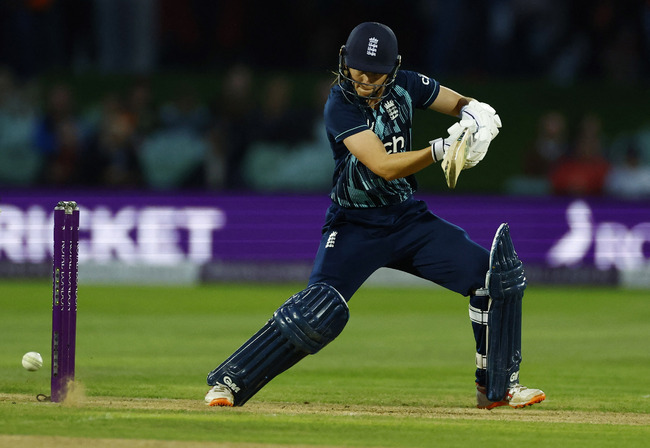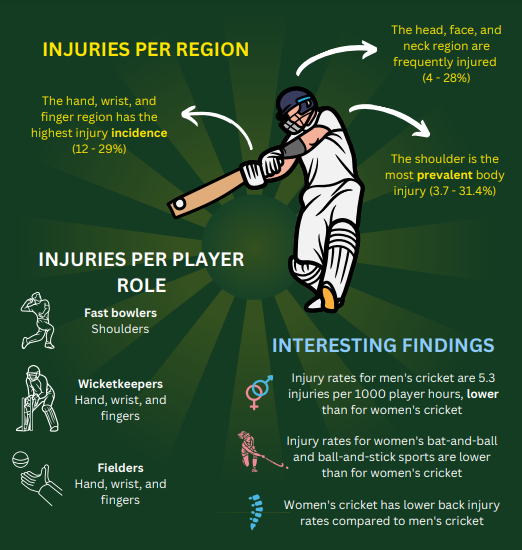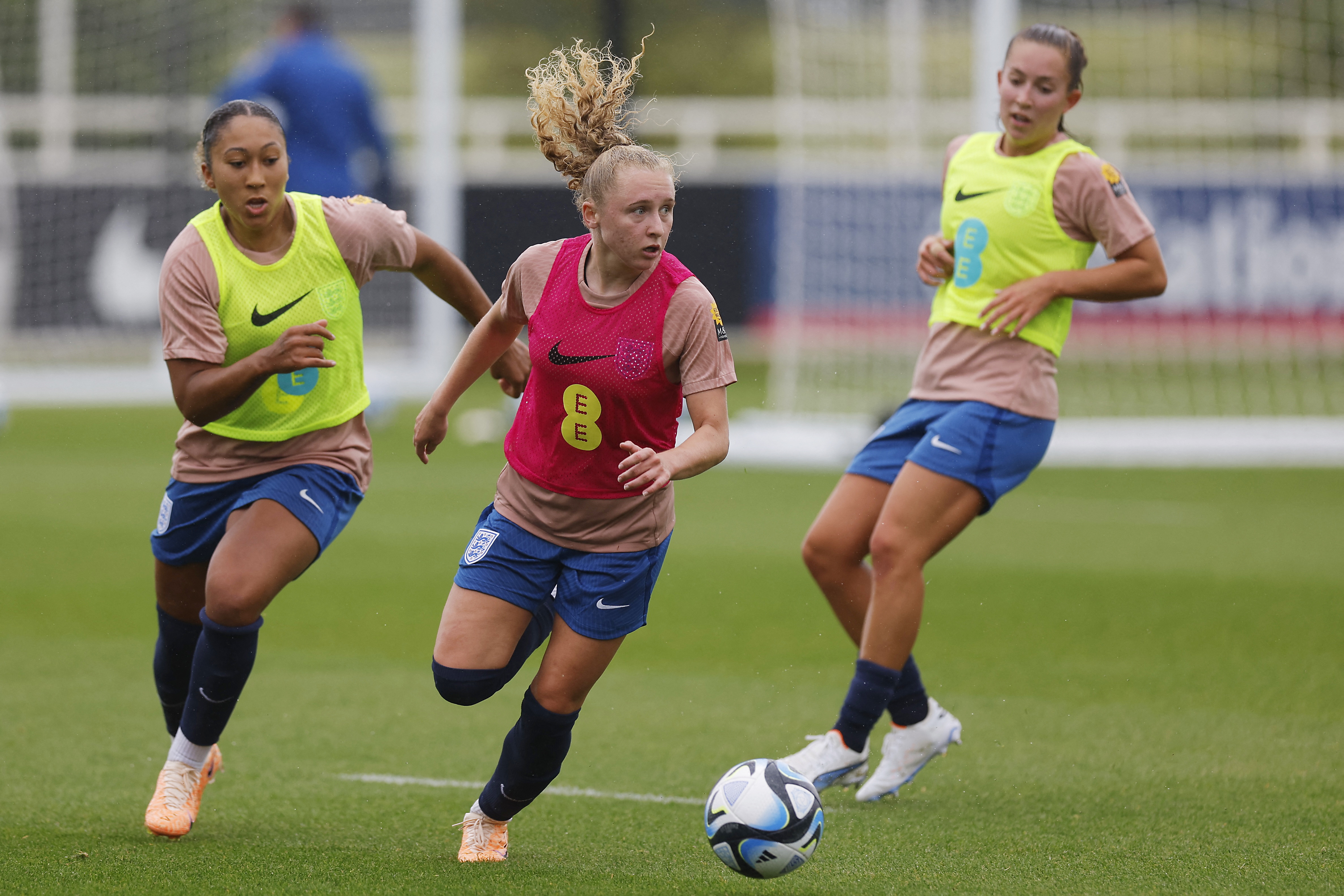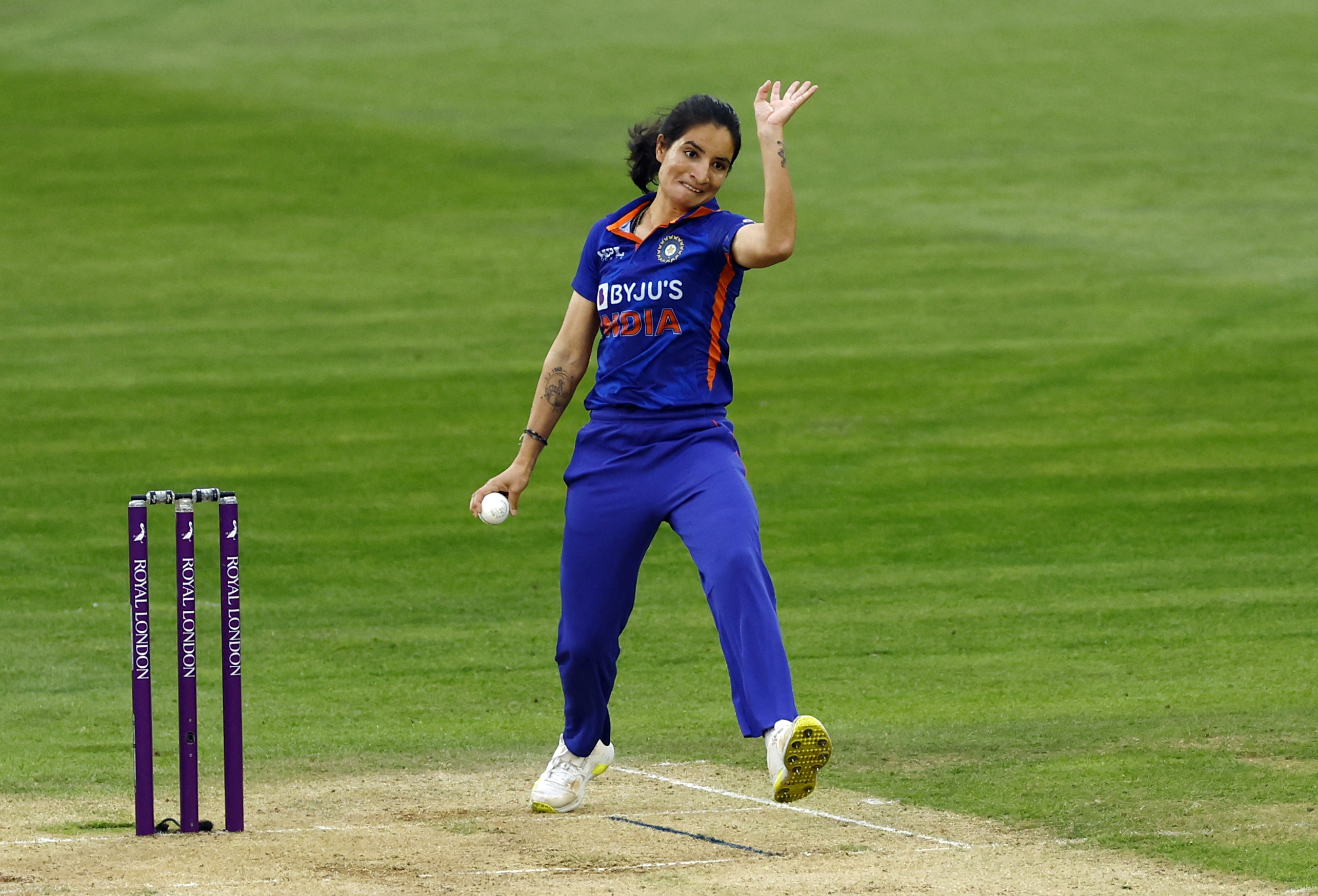You are viewing 1 of your 1 free articles
The buzz around women’s cricket: does increased participation lead to more injuries?
Women’s cricket is becoming more popular in countries all over the world. However, the evidence around injury risk factors is limited. Jolandi Jacobs discusses what is currently known about injuries sustained by female cricket players, the possible causes, and how to prevent these injuries in clinical practice.
The health benefits of regular physical activity are well known, and females who participate in team sports such as cricket experience positive physical and mental health effects(1). Although women have played cricket for over 200 years, the sport’s popularity among women of all ages and levels of play (from community to elite) has grown in recent years(2). In addition, females compete at a competitive level comparable to men, thanks to increased popularity and investments in women’s sports. The women’s game has evolved to where countries can compete in World Cups, and individual players have the opportunity to compete in international competitions such as the Women’s Big Bash League (WBBL), FairBreak International Tournament, and the new Women’s T20 Challenge, which will begin in 2023.
As the women’s game becomes more professional, similar to other sports, there will be more injuries among players(3). Previously, what practitioners knew about female cricket injuries was limited to findings from the men’s game. Injuries negatively impact sports participation, performance, and short- and long-term health and well-being. Therefore, injury prevention is essential for safe, long-term participation. However, injury epidemiology in women’s cricket is a novel and emerging research field.
The current injury rate for men’s cricket (from community to elite levels) seems to be lower than the women’s injury rates(3). However, research findings from team sports such as soccer, basketball, and ice hockey show that injury risks vary between sexes(4,5). The high prevalence of injuries in women’s cricket can be due to skill level, bowling speed, physical development, workloads, and fixture schedules(6).
Sports such as cricket and softball carry a high risk of hand, wrist, and finger injuries because of the risk of impact from the fast-moving ball. Fielders and wicketkeepers in women’s cricket are more likely to injure their hands, wrists, and fingers than any other body region(3). Furthermore, these injuries were also the second most frequently injured region among female competitive bat-and-ball and ball-and-stick sports(7). Although batters and wicketkeepers wear gloves and wrist guards, the impact of a hard ball can cause tissue damage regardless of whether the player is wearing gloves. Fielders are at a higher risk of hand, wrist, and finger injury because they do not wear protective gear. Given the high incidence of these injuries among female fielders, it is possible that some players’ catching and fielding techniques predispose them to injuries.
For example, when catching a ball, the finger may forcefully hyperextend. The force of hyperextension can damage the volar plate ligament, which maintains the structural integrity of the proximal interphalangeal joint and may cause an avulsion fracture. In addition, many casual or community-level players may have yet to develop cricket-specific skills, such as fielding. Thus, their risk of cricket injuries is higher due to shortcomings in technique and training. Therefore, female cricket players could benefit from skills training to improve their reaction time and hand-eye coordination to mitigate the risk of injury.
Shoulder injuries are common in athletes who participate in overhead hitting and throwing sports like tennis, baseball, and handball(8). The shoulder joint is intrinsically more unstable when compared to a ball-and-socket joint, such as the hip joint. As a result, the shoulder is more prone to injury during the deceleration phase of the throwing motion, when a large amount of energy passes through the joint(9). In women’s cricket, shoulder injuries are more common among fast bowlers than in other player roles. This finding is similar to men’s cricket.
When throwing or bowling, the kinetic chain decelerates the rapidly moving arm with the rest of the body, and the shoulder muscles produce significant compressive forces to prevent joint dislocation. Female fast bowlers may be more vulnerable to injury due to shoulder distraction force and changes in the range of motion in body regions such as the shoulder, trunk, lumbar region, and hip(10). In addition, muscle changes caused by repetitive scapular muscle use can affect the scapular position and increase the risk of a shoulder injury. Therefore, practitioners typically implement neuromuscular injury prevention programs for throwing athletes to strengthen and condition the shoulder muscles while also improving throwing mechanics. As a result, a cricket-specific injury-prevention exercise program can improve shoulder strength and balance, core stability, and muscle control, allowing female cricket players to perform at their best while reducing the risk of injury(11).
Related Files
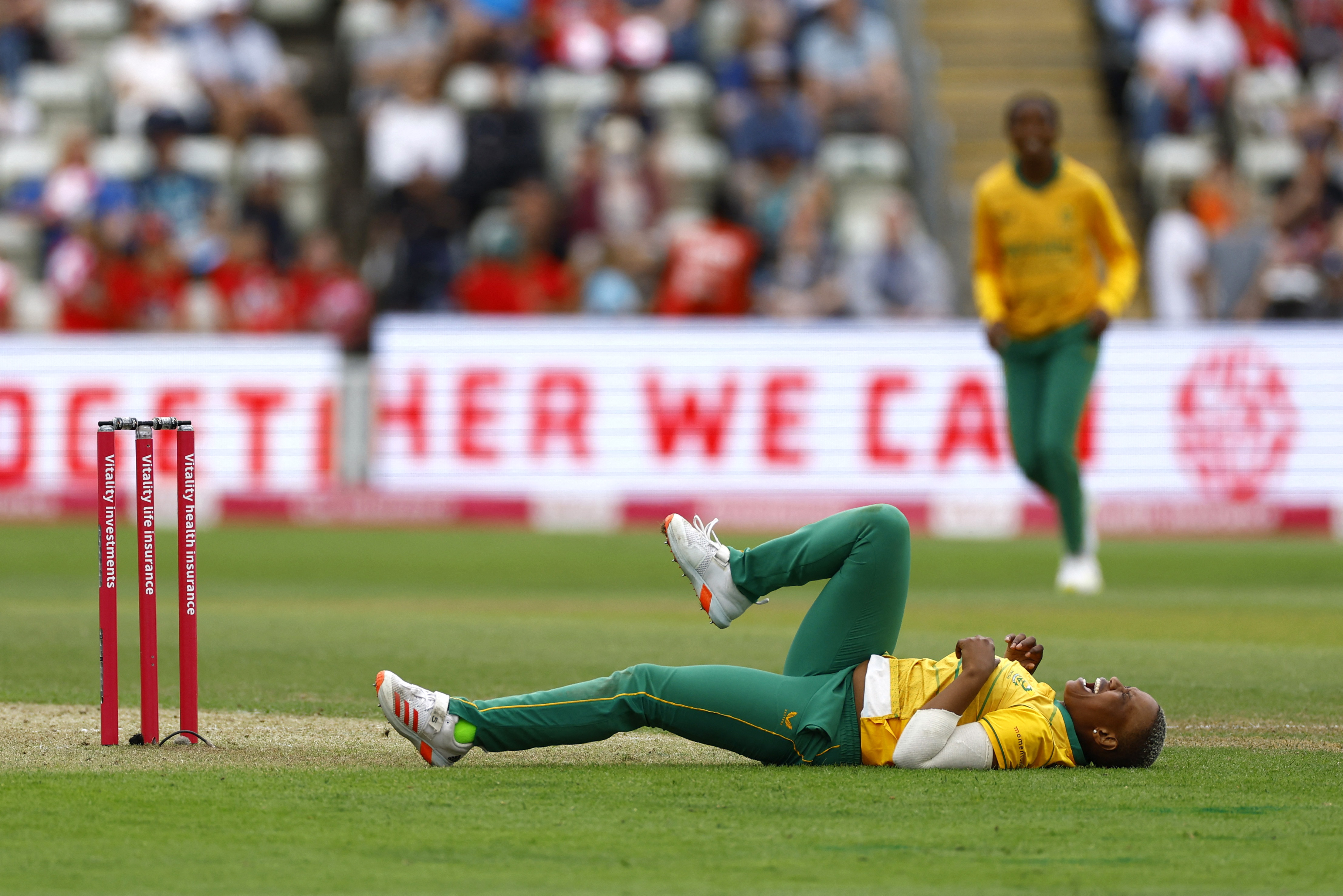
Lower-limb injuries to the knee, ankle, foot, and toes are also common in women’s cricket, as in other female bat-and-ball-and-stick sports(3). This is comparable to men’s cricket, with hamstring strains being the most common(12). Running (e.g., sprinting, sudden acceleration or deceleration, such as running between wickets) and jumping are known to increase the likelihood of hamstring injuries (e.g., fielding a ball). Cricket requires quick bursts of running, changes of direction, and rebounding. Poor neuromuscular control and strength are well-known risk factors for lower-limb injuries(13).
Females have greater ankle inversion-eversion range of motion and lower dynamic postural control levels than males, predisposing them to lower-limb injuries. Furthermore, physiological differences such as joint laxity and hormonal fluctuations during the menstrual cycle can increase ligamentous laxity and decrease neuromuscular performance, affecting ligament integrity(14,15). Traumatic joint injuries (e.g., knee and ankle) can increase the risk of post-traumatic osteoarthritis and negatively impact long-term participation. Neuromuscular injury-prevention programs in other sports, such as women’s football, have reduced overall injuries by 27% and ligament injuries by 45%(16). Adequate neuromuscular control in muscle recruitment, timing, and strength can help to improve joint stability in athletes.
Head, face, and neck injuries are common among club and elite-level female players(3). Although batters are less frequently injured, there is concern about the increased risk and severity of head impacts and concussions. A fast-moving ball hitting them while batting or fielding is a potential injury mechanism. Batters in countries such as Australia must wear helmets during games and practice when facing a pace bowler. Nonetheless, fielders are unlikely to wear helmets and may be more vulnerable to severe head injuries, which can result in hospitalization(17). Given the severity of potential injuries, protective equipment such as helmets for batters, close fielders, and wicketkeepers should be encouraged at all levels of play. Skills training, for example, in reducing visual reaction time, could reduce the risk of head impact injuries.
Researchers from the Wits Cricket Hub for Science, Medicine and Rehabilitation in South Africa found that female bowlers are more likely to sustain shoulder injuries than other injuries(3). This is because fast bowling requires unnatural shoulder counter-rotation, trunk lateral flexion, and extension in conjunction with side-on, front-on, or mixed bowling actions, which increases the injury risk. In addition, high bowling workloads (e.g., number of overs delivered) and spikes in bowling workloads (e.g., transitioning from T20 to test cricket) are key risk factors for male fast bowlers. Fast bowlers also have higher workloads because they cover more distance than other roles and have 35% less recovery time between spells (overs), which may explain why they are more prone to injury(18,19).
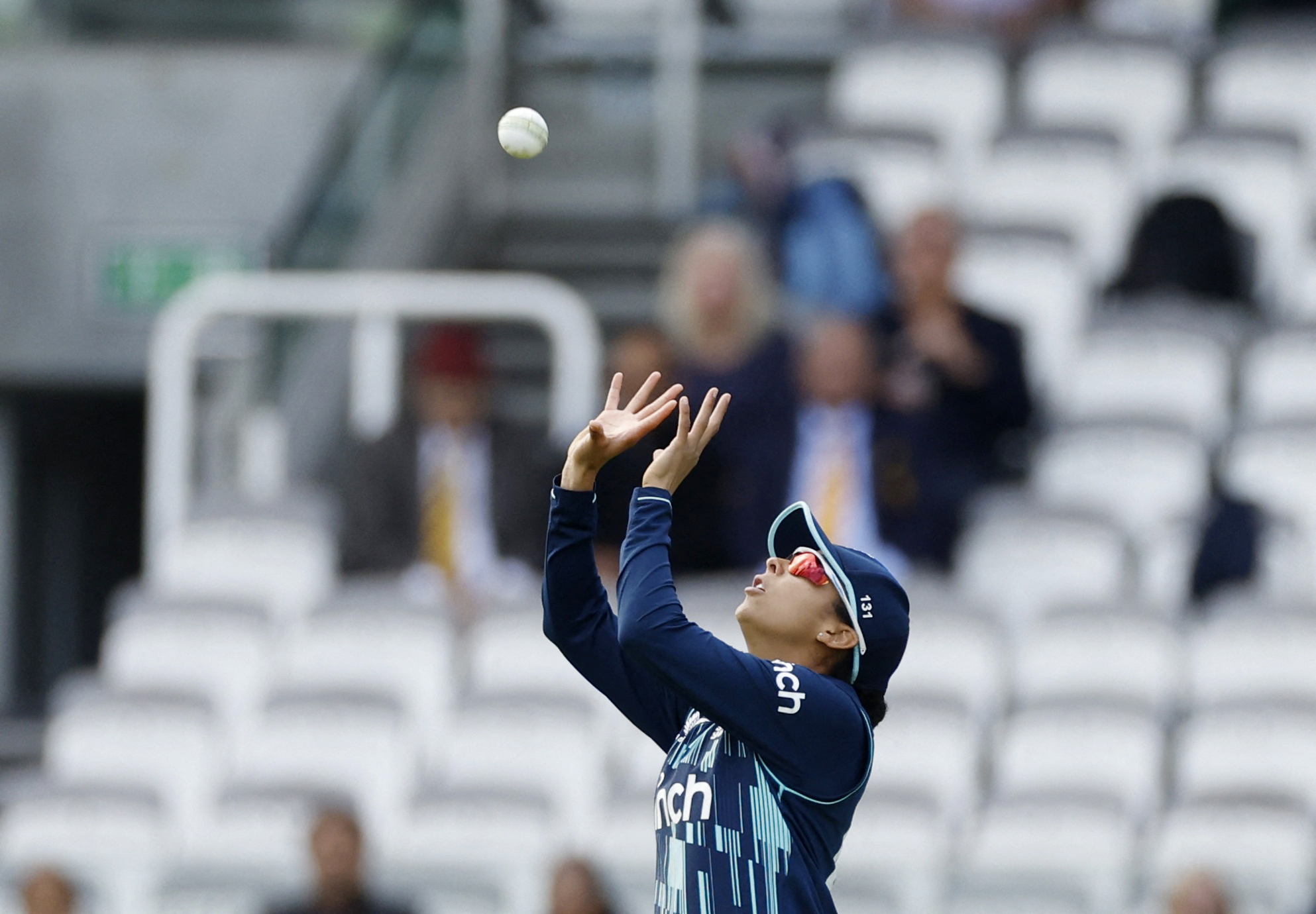
Conclusion
Knowledge of the injuries sustained among female cricket players will enable stakeholders (including players, coaches, clinicians, administrators, and policymakers) to make informed decisions about cricket participation. Furthermore, practitioners can use the knowledge to develop injury-prevention programs, reducing the burden of injuries, increasing player availability, and improving a team’s performance level. Practitioners should develop injury prevention strategies by identifying injury-causing factors and emphasizing specific skill training for women’s cricket, such as visual and auditory reaction stimulation, improved hand-and-eye coordination, and optimal player conditioning and management. By reducing the risk of injury, players will compete in more matches, increasing their team’s chances of success.
References
- Am J Health Prom. 2019;33(5):675–82.
- Int J Hist Sport. 2011;28(1):115–36.
- JBI Evid Synth. 2022;20(7):1741-1790.
- J Sport Med. 2014;2(1): 2325967113518181
- PM R. 2018;10(10):1073–82.
- J Sport Sci. 2007;25(14):1587–97
- Sport Med. 2018;48(3):617–40.
- Br J Sport Med. 2018;52(20):1312–9.
- J Sport Sci. 2020;38(10):1096–104.
- J Sci Med Sport. 2008;11(6):575–80.
- J Athl Train. 2017;52(12):1171–2.
- J Sport Med. 2016;7:187.
- Am J Sport Med. 2014;42(4):940–8.
- J Sport Med. 2014;2(1): 2325967113518181.
- PM R. 2018;10(10):1073–82.
- J Athl Train. 2017;52(12):1171–2.
- J Sci Med Sport. 2019;22(11):1213-18.
- Sth Afr J Sport Med. 2015;27(4):108–13.
- J Sport Sci. 2010;28(1):45–52.
Newsletter Sign Up
Subscriber Testimonials
Dr. Alexandra Fandetti-Robin, Back & Body Chiropractic
Elspeth Cowell MSCh DpodM SRCh HCPC reg
William Hunter, Nuffield Health
Newsletter Sign Up
Coaches Testimonials
Dr. Alexandra Fandetti-Robin, Back & Body Chiropractic
Elspeth Cowell MSCh DpodM SRCh HCPC reg
William Hunter, Nuffield Health
Be at the leading edge of sports injury management
Our international team of qualified experts (see above) spend hours poring over scores of technical journals and medical papers that even the most interested professionals don't have time to read.
For 17 years, we've helped hard-working physiotherapists and sports professionals like you, overwhelmed by the vast amount of new research, bring science to their treatment. Sports Injury Bulletin is the ideal resource for practitioners too busy to cull through all the monthly journals to find meaningful and applicable studies.
*includes 3 coaching manuals
Get Inspired
All the latest techniques and approaches
Sports Injury Bulletin brings together a worldwide panel of experts – including physiotherapists, doctors, researchers and sports scientists. Together we deliver everything you need to help your clients avoid – or recover as quickly as possible from – injuries.
We strip away the scientific jargon and deliver you easy-to-follow training exercises, nutrition tips, psychological strategies and recovery programmes and exercises in plain English.
